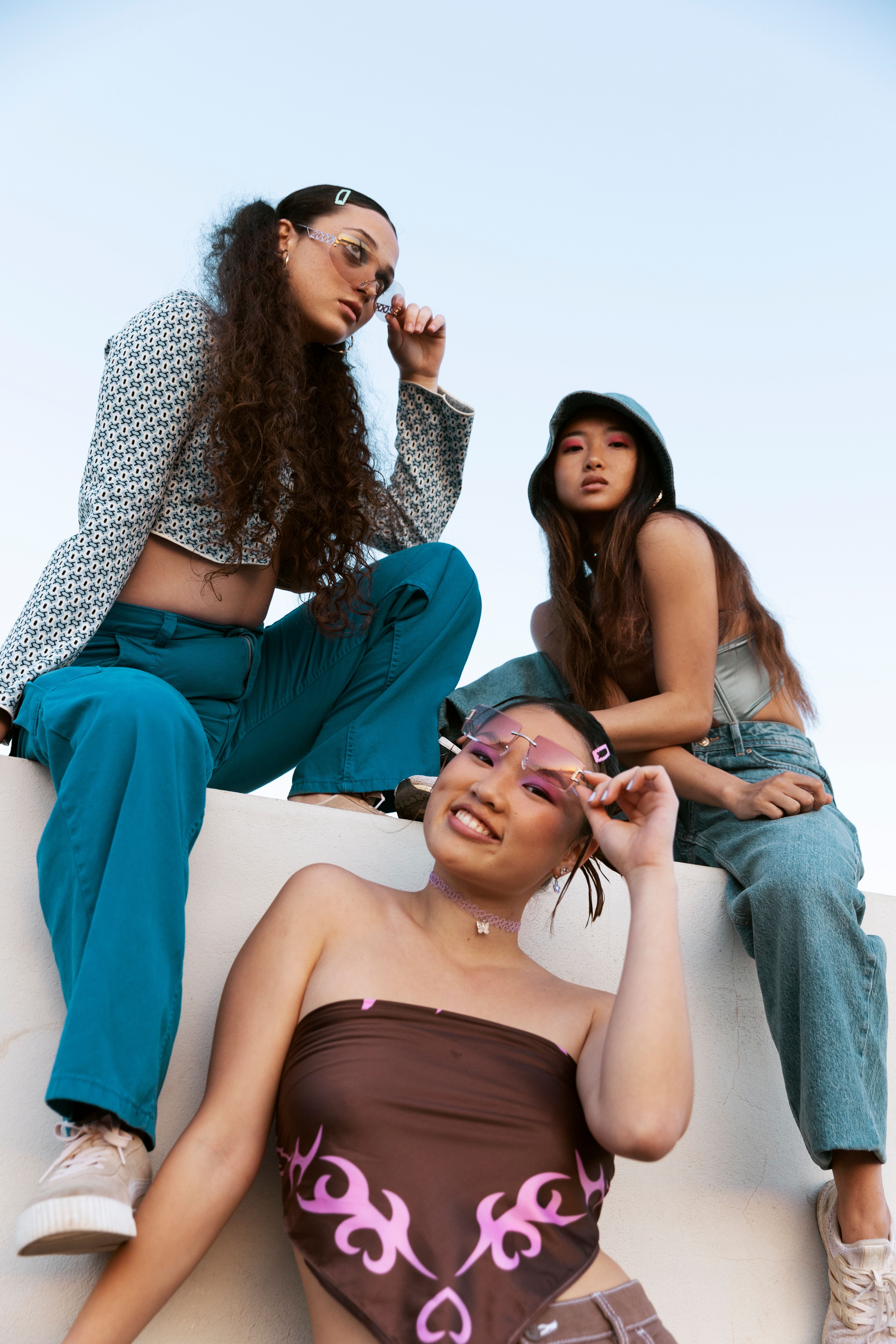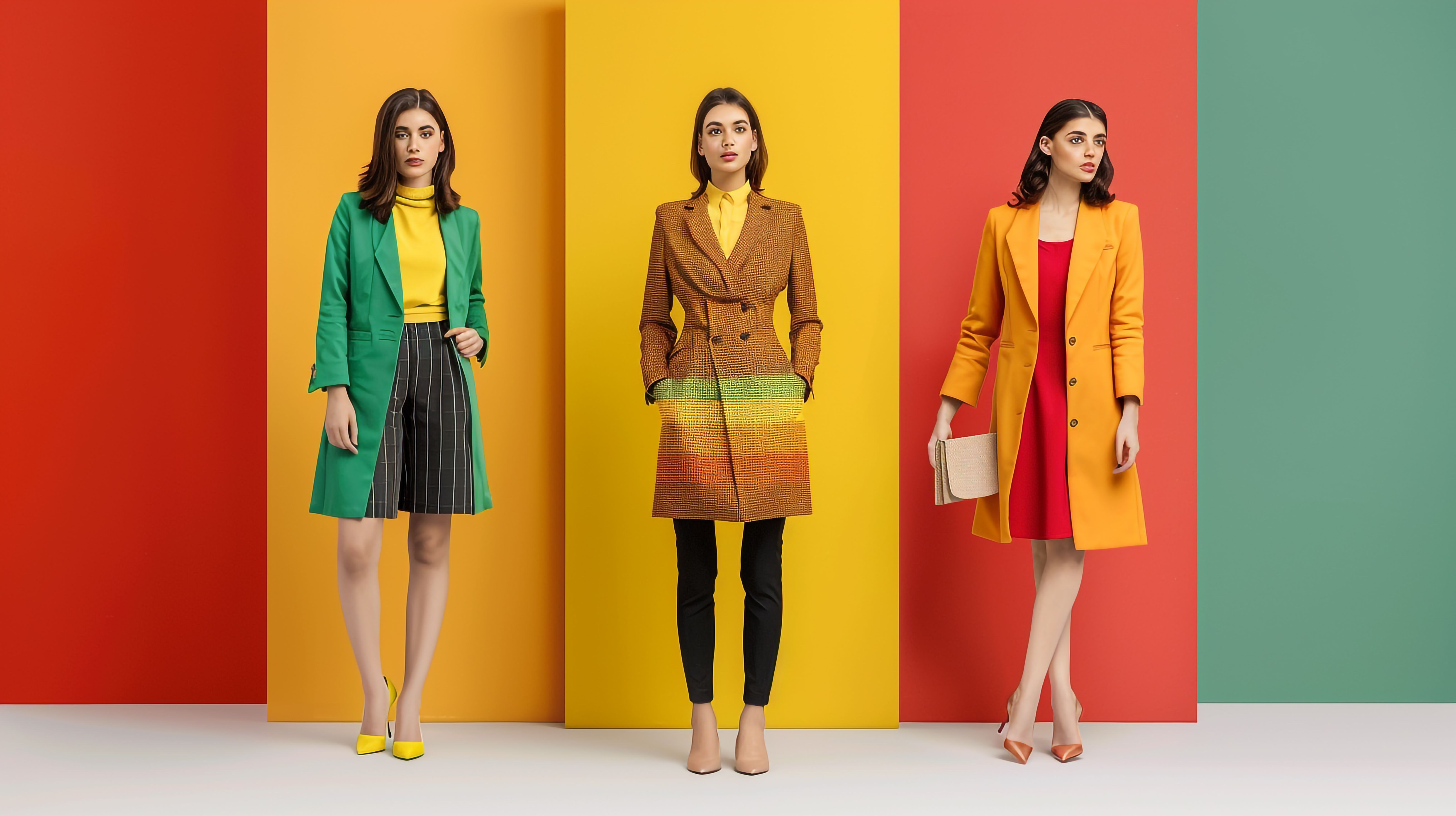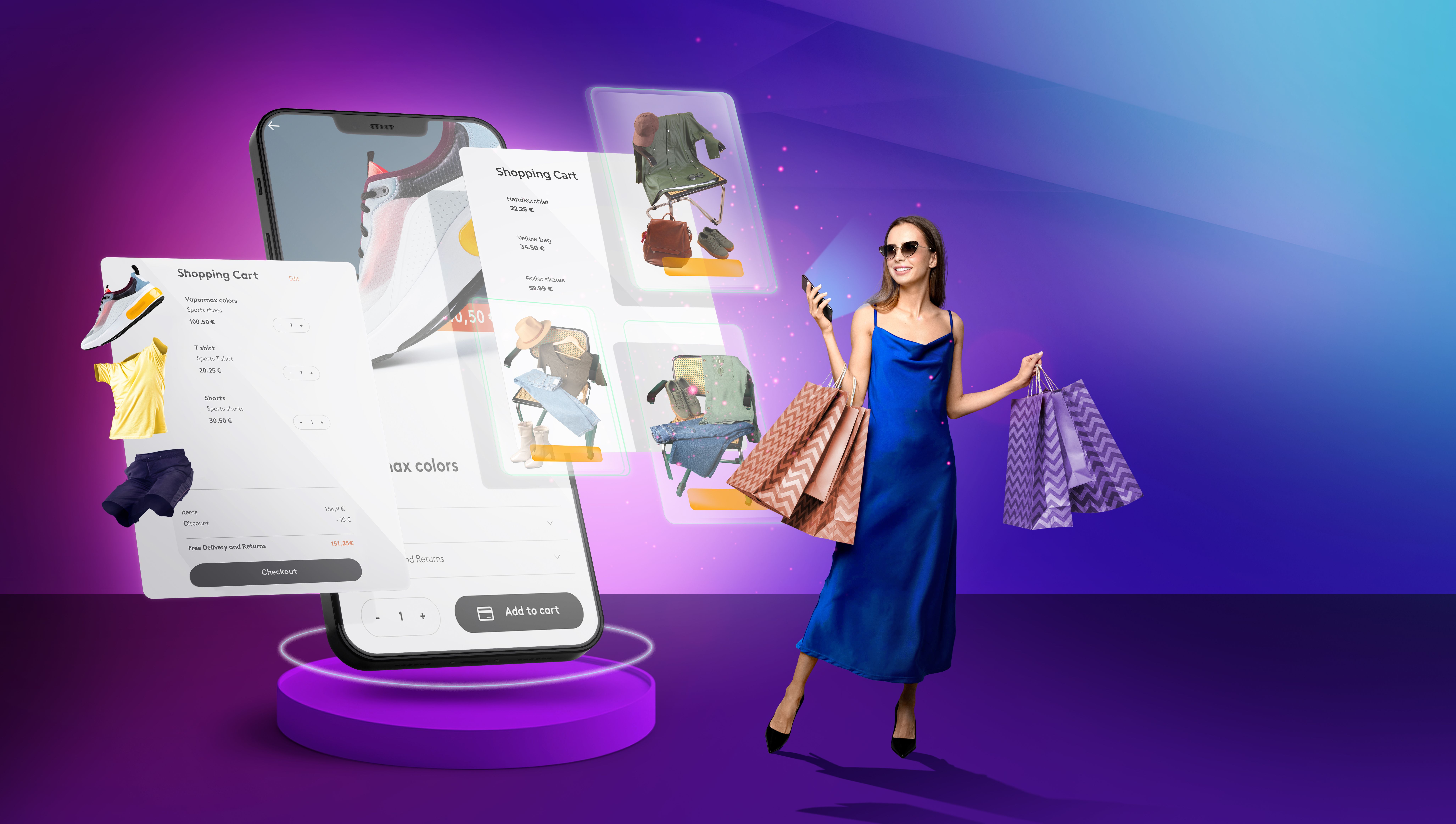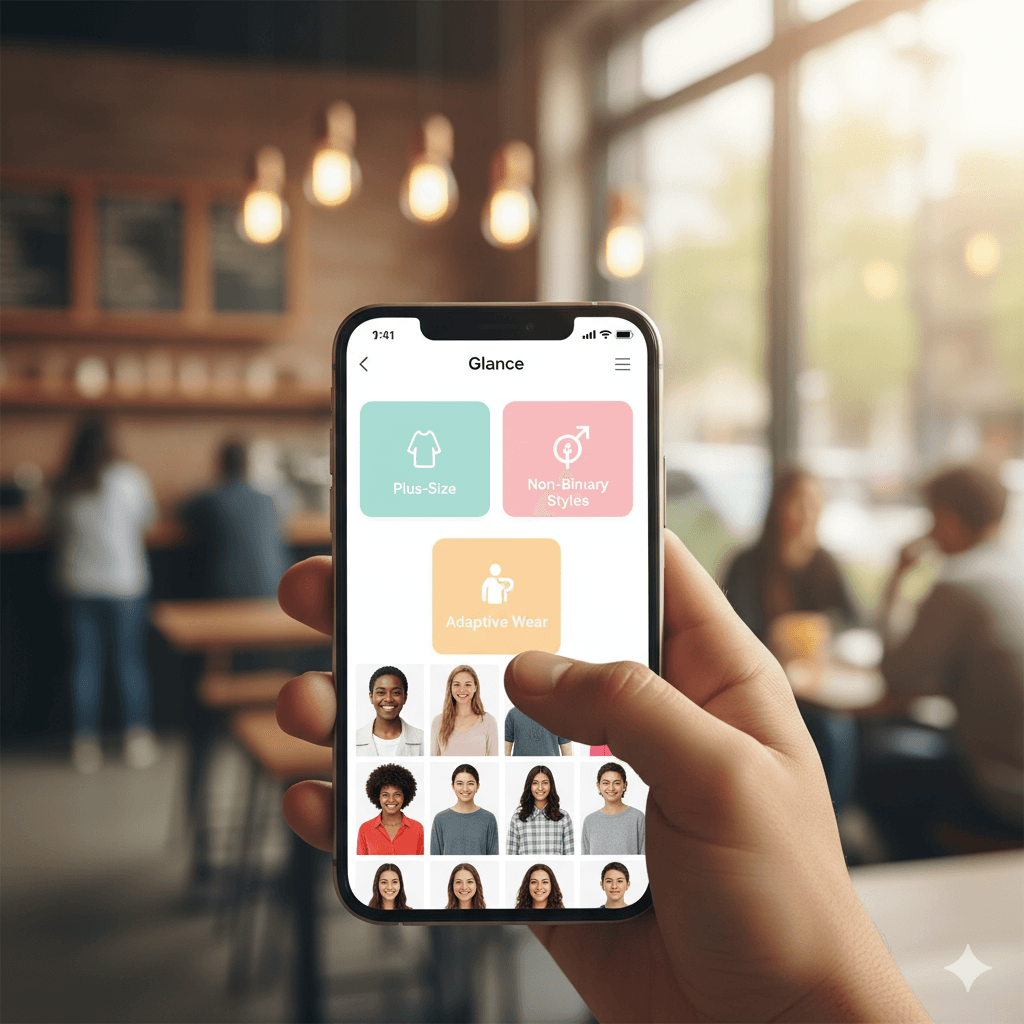How Fashion Inspiration Evolves Through Social Media
The Next Wave: AI Fashion and Color Trends Explained
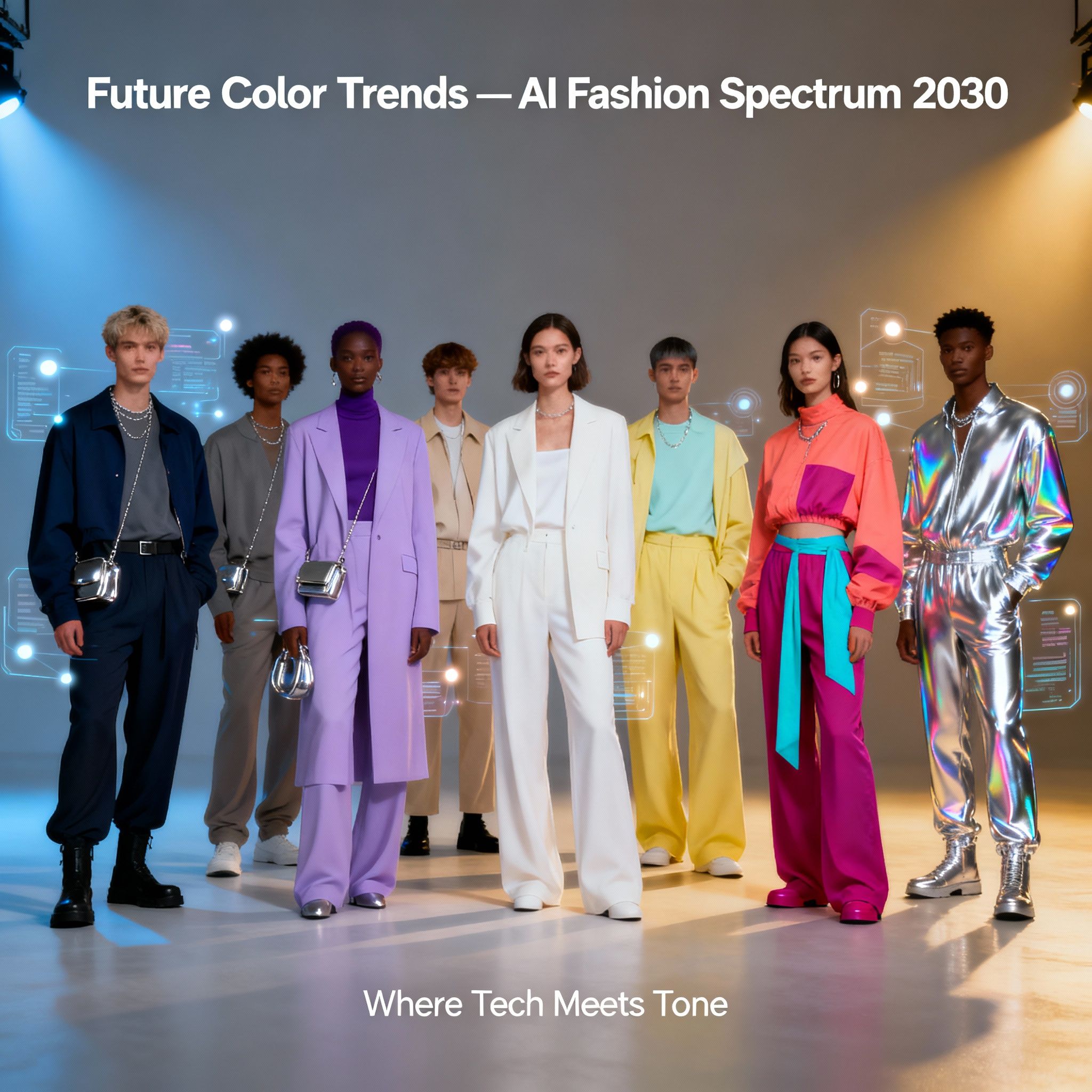

TL;DR
Glance leverages AI-driven color intelligence to predict emerging color trends in fashion. From evolving palettes to fabric interaction and emotional mapping, this article explores 5 key innovations shaping how AI fashion makes color personalization more future-focused and expressive.
The Future of Color Science in Fashion: How AI Shapes Hue & Emotion
In the era of intelligent personalization, color trends are no longer dictated by seasonal palettes but by AI fashion systems that adapt to user emotion, tone, and context. Glance positions itself as an app-first discovery platform that merges color science with behavioral intelligence — helping fashion evolve from static to fluid, responsive aesthetics.
Color is a powerful communicator, and the next frontier in fashion lies in merging Color, Fabric & Style Science with real-time user intelligence. Below, we unpack how this alchemy is taking shape and what it means for fashion, users, and Glance’s edge.
The Rise of AI-Driven Color Forecasting
From decades of relying on human trendspotters and seasonal mood boards, fashion brands are now turning to AI systems to predict color trends with higher accuracy. According to Trendalytics, AI-driven forecasting tools analyzing search behavior, social media, and purchase data now guide color decisions for top labels.
According to a 2024 ResearchGate study, applying machine learning to runway imagery revealed a significant gap between actual colors used and Pantone forecasts, highlighting how AI quantifies implicit consumer color preferences.
AI can identify emerging chromatic trends months ahead, e.g. “vibrant oranges, digital blues, eco-greens” predicted by AI for upcoming collections.
Why Color Science Now Matters More Than Ever
- Color is identity:
A study titled Colour matters shows that consumers’ clothing choices are deeply influenced by mood, body image, cultural context, and external factors like climate. “According to a 2022 exploratory study, colour preferences coexist across internal (mood, identity) and external (weather, social) influences,” highlighting how color perception is multidimensional.
- Demand for personalization is rising.
As per The State of Fashion (McKinsey), digital and AI investments are among the top priorities for fashion brands globally. “According to McKinsey’s 2023 report, over 40% of brands plan to scale AI-based personalization this year.”
This shift paves the way for future color trends in AI fashion, where colors adapt to individuals, not just broad palettes.
The Next Palette: 2026’s Hottest Colors
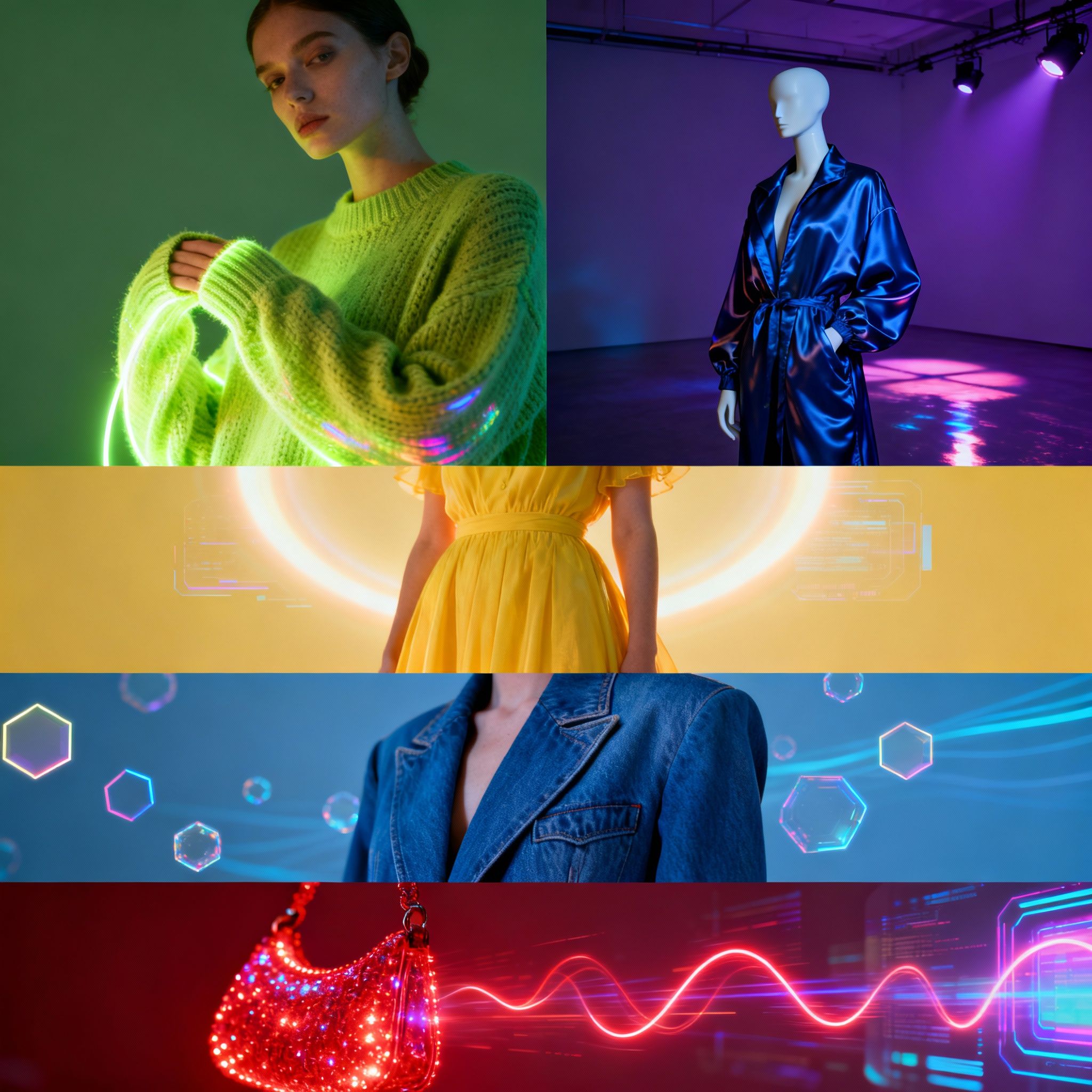
1. Future Dusk: The Color of the Year
WGSN and Coloro have declared Future Dusk, a deep blue-violet shade, as the 2026 Color of the Year. This hue reflects the interplay between the physical, virtual, and fantasy realms in contemporary society.
2. Chartreuse: The Bold New Hue
Chartreuse is emerging as a standout color for fall 2026, offering a vibrant, citrusy touch to the autumn palette. It's frequently seen on runways and is making its mark in cozy knits, bold outerwear, and statement accessories.
3. Celestial Yellow: Optimism in Color
Celestial Yellow is a bright and optimistic yellow that evokes the sun and the stars. This color represents hope and positivity, connecting to the growing interest in astrology and spirituality.
4. Retro Blue: Nostalgia Meets Fashion
Retro Blue is a classic and dependable blue that recalls the past and the familiar. This color represents stability and comfort, connecting to the increasing appreciation of vintage and retro styles.
5. Neon Flare: The Digital Age Hue
Neon Flare is a bold, digital red that captures energy and attention. As part of evolving AI fashion trends, it represents urgency, activism, and the rapid evolution of technology.
As AI and digital innovation continue to influence fashion, colors like Neon Flare highlight how color trends in AI fashion are becoming more dynamic, expressive, and emotionally aware — shaping styles that reflect both the climate of the times and individual preferences.
Color, Fabric & Style Science: The Triad of Smart Chromatics
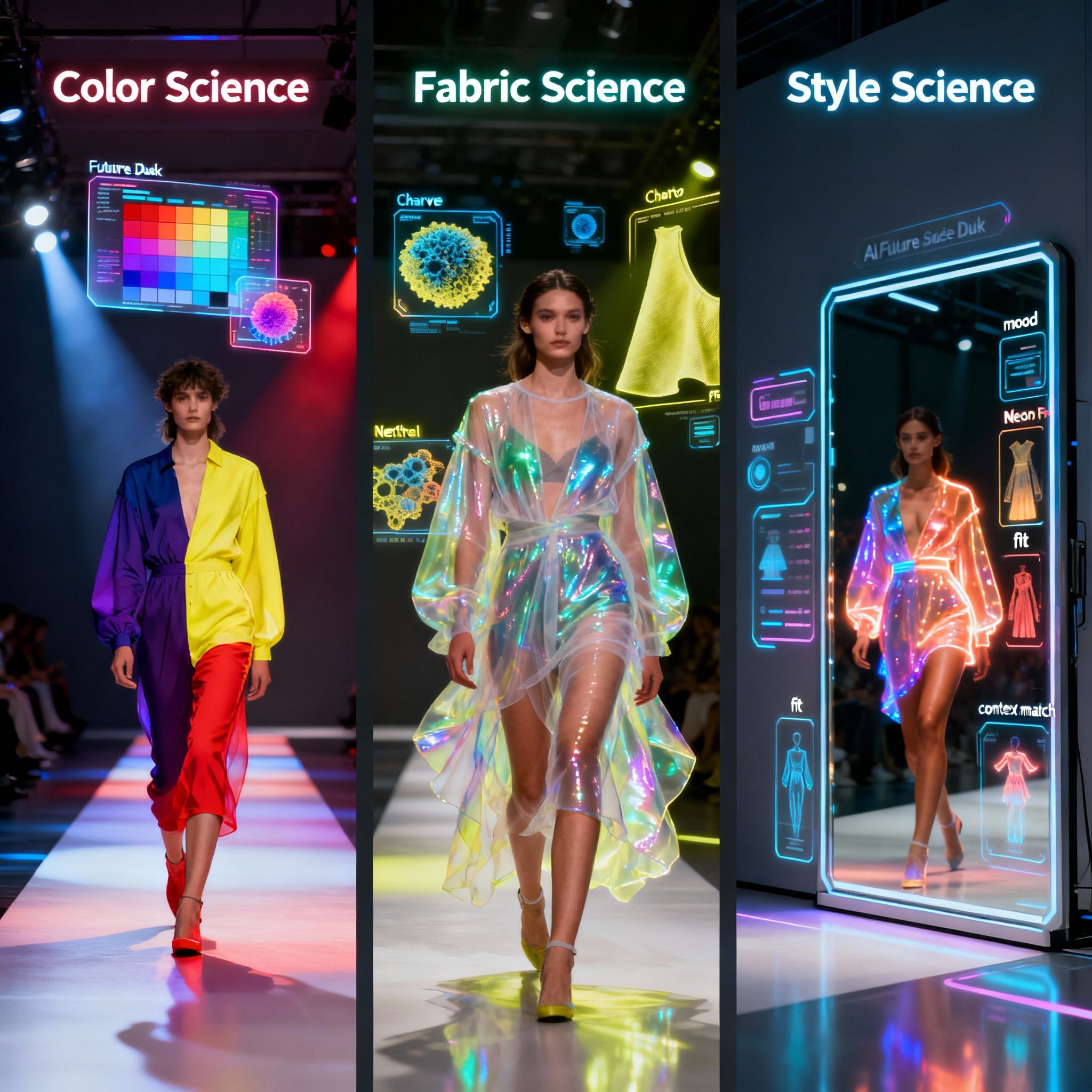
The cluster keyword “Color, Fabric & Style Science” isn’t just jargon; it maps to three interlocking layers of how color trends evolve in AI fashion.
| Layer | Role in Color Trends & AI Fashion | Example / Insight |
| Color Science | Chromatic models, illumination control, metamerism | Dynamic lighting systems that shift dress hue mid-show |
| Fabric Science | Texture, reflectance, dye interaction | Sheer fabrics blending with sublayers to produce tonal shifts |
| Style Science | User fit, movement, context matching | AI styling that adapts colors to skin tone, body shape, mood |
Together, these elements transform color trends from static seasonal cycles to continuous, personalized experiences powered by AI fashion intelligence.
Trends & Data in Color Futures
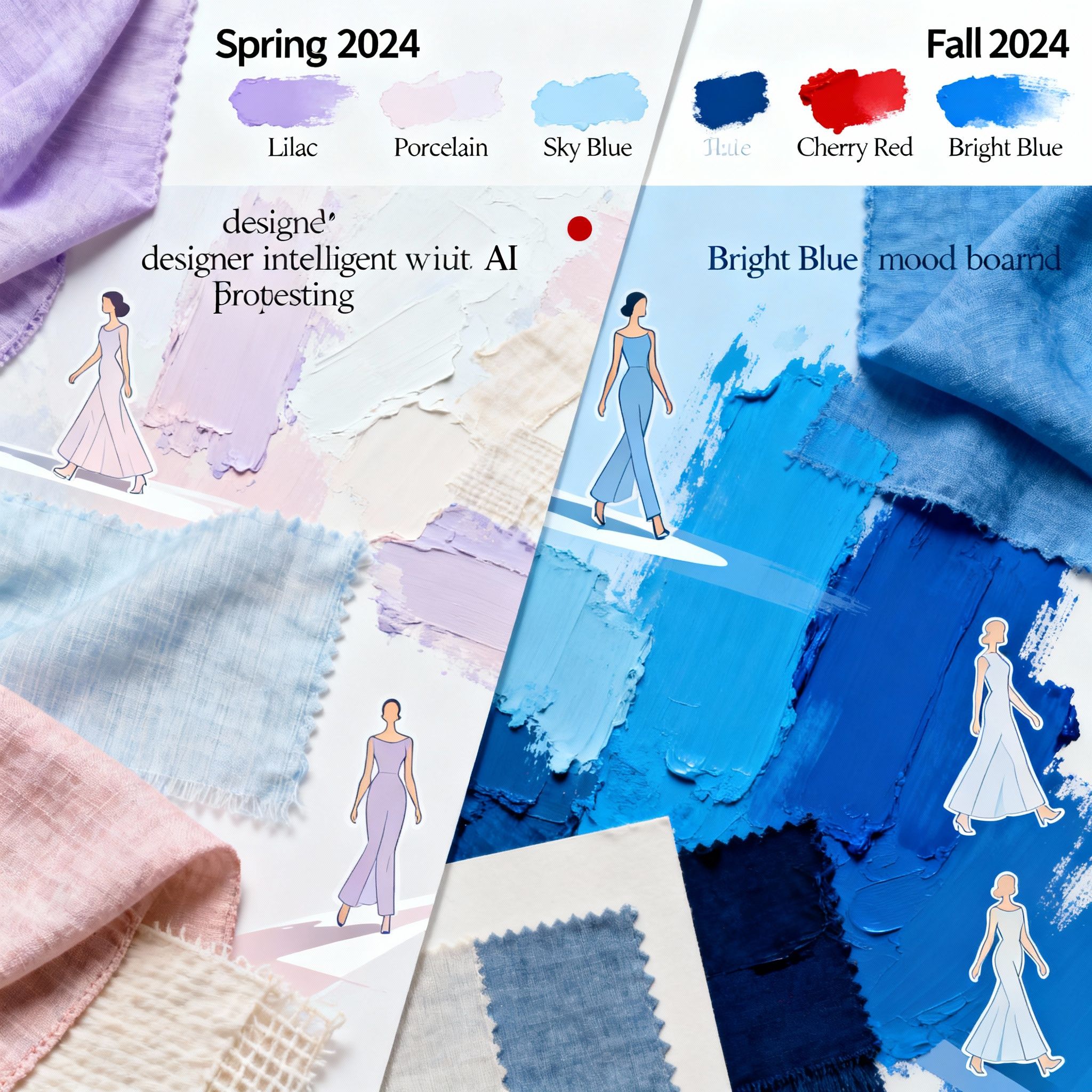
Palette Predictions & Runway Signals
- In Pantone’s Fashion Color Trend Report for Spring 2024, soft neutrals and bold accents featured strongly. “According to Pantone, five new core classics emerged across designers’ collections.”
- Vogue’s forecast for spring 2024 lists Cherry Red, Porcelain White, Pastel Lilac, Sky Blue, Liquid Gold as sleeper hits.
- For fall 2024, bright blue was spotlighted across designers. “As per fashion forecasts, clear-sky blue dominated Gucci, Prada, and Chloé collections.”
These indicators show how AI fashion forecasting integrates bold and subtle hues in harmony — forming the basis for future color trends that blend personal and cultural expression.
Implications & Opportunities for Brands & Users
- Brands must adopt dynamic color inventory: static color SKUs may lag as AI Twin customization demands micro-variants.
- Designers can build for metamerism: choosing dyes and fabrics that respond well to illuminant shifts.
- Consumers access hyper-personal cosmetics: Glance becomes your gateway to discovering colors you didn’t know you loved.
- Glance strengthens differentiation: by combining behavioral intelligence + color science, Glance isn’t a shopping app it’s a live color experience.
For readers curious about the best luxury shopping apps India, Glance’s color personalization and discovery engine could become your preferred canvas for curated high-end fashion.
For those seeking affordable aesthetic fashion outfits, color-centric AI styling ensures even budget picks feel expressive and individually tuned.
Conclusion: The Future Is Vibrant
As fashion moves beyond fixed palettes, AI fashion and color trends are reshaping how we see, feel, and live in color. Glance isn’t just a style assistant — it’s a living mirror powered by behavior, emotion, and chromatic science.
Dive into color-first discovery, download Glance on iOS or Android and let your AI Twin illuminate your hues.
Explore how AI, color, and style converge and shape your wardrobe’s next frontier.
Let me know if you’d like to tighten any section, adjust the narrative, or swap out some stats with India-centric data!
FAQs
Q1: What are AI-driven color trends?
It refers to AI-driven, dynamic color evolution personalized to behavior, mood, and context.
Q2: How does Glance generate color suggestions?
Glance uses dwell-time, swipe-speed, and sequence flow to surface palettes tailored to you.
Q3: Can clothing colors change after purchase?
No dynamic color shifts occur in previews; final garments are static but chosen via adaptive selection.
Q4: Is this tech available now?
Yes, Glance's discovery engine already leverages these behavioral signals; future lighting effects are emerging.
Q5: Does this support inclusive skin tones?
Yes the color engine is designed to adapt to every tone, shape, and lighting context.


